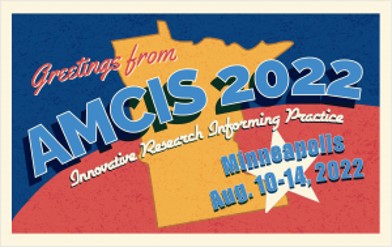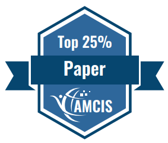Conference Theme Track - Innovative Research Informing Practice
Loading...
Paper Type
Complete
Paper Number
1699
Description
The ubiquitous integration of IT into daily life has blurred the boundaries of where an IT ends and an individual begins. This cyborg existence necessitates understanding of how individuals conceptualize who they are, their identity, in relation to IT. Recently, IS scholars proposed the concept of IT identity. Emergent literature demonstrates the predictive power of IT identity as an antecedent to technology use, but there has yet to be an empirical investigation into whether the theorized concept of IT identity is truly distinct from other types of personal identities. Our inductive approach reveals that IT identities are claimed by indiviudals in different, sometimes ambivalent and dynamic, ways. As theorized, IT identity has elements of relatedness, emotional energy, and dependence, and spans spectrums from weak to strong, positive to negative.
Recommended Citation
Weng, Qin; Wang, Wendy; and Young, Amber Grace, "How Is IT Identity Claimed and Manifested?" (2022). AMCIS 2022 Proceedings. 6.
https://aisel.aisnet.org/amcis2022/conf_theme/conf_theme/6
How Is IT Identity Claimed and Manifested?
The ubiquitous integration of IT into daily life has blurred the boundaries of where an IT ends and an individual begins. This cyborg existence necessitates understanding of how individuals conceptualize who they are, their identity, in relation to IT. Recently, IS scholars proposed the concept of IT identity. Emergent literature demonstrates the predictive power of IT identity as an antecedent to technology use, but there has yet to be an empirical investigation into whether the theorized concept of IT identity is truly distinct from other types of personal identities. Our inductive approach reveals that IT identities are claimed by indiviudals in different, sometimes ambivalent and dynamic, ways. As theorized, IT identity has elements of relatedness, emotional energy, and dependence, and spans spectrums from weak to strong, positive to negative.
When commenting on articles, please be friendly, welcoming, respectful and abide by the AIS eLibrary Discussion Thread Code of Conduct posted here.




Comments
Res Infor Practice